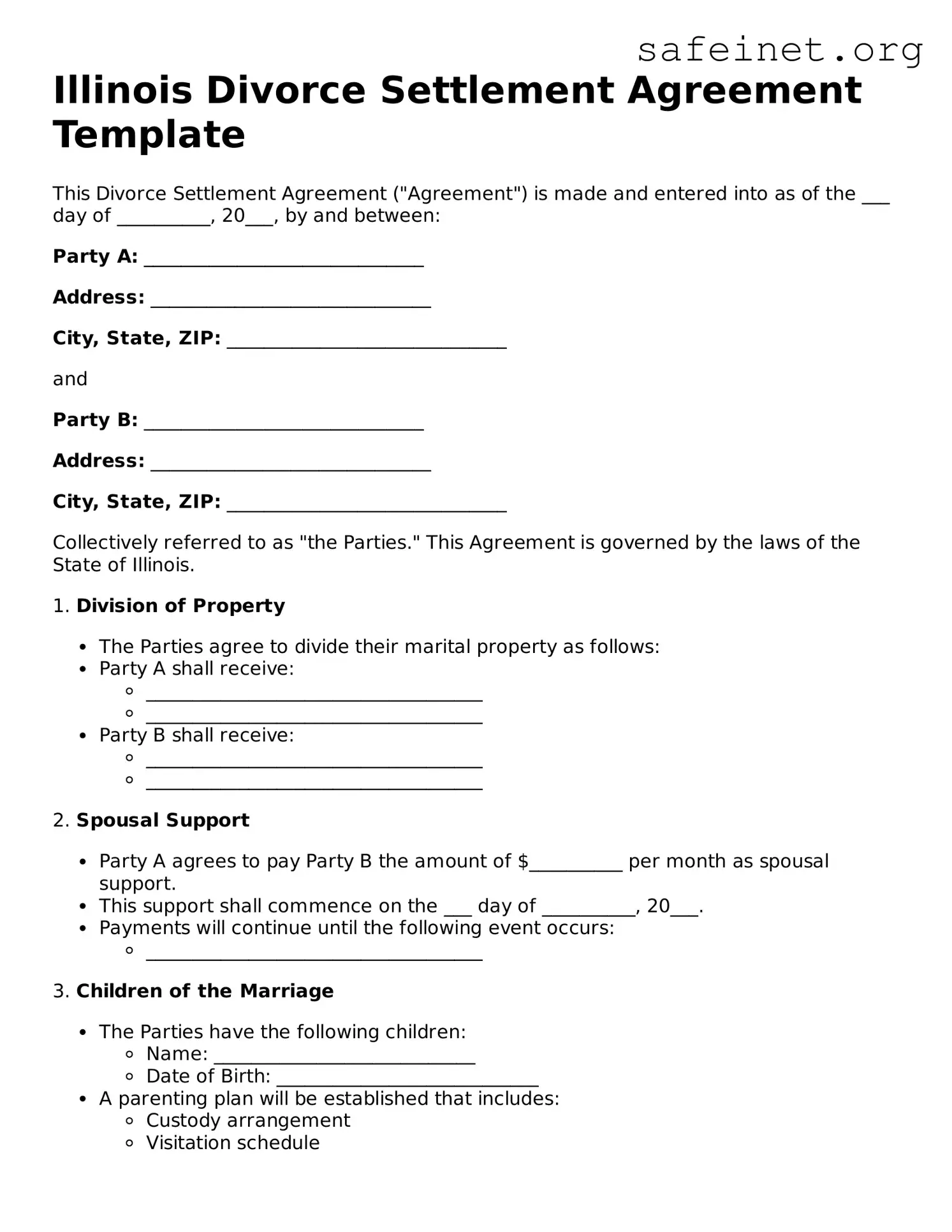What is an Illinois Divorce Settlement Agreement?
An Illinois Divorce Settlement Agreement is a legal document that outlines the terms agreed upon by both spouses during a divorce. It covers various aspects, including division of property, child custody, child support, and spousal support. This agreement is crucial for ensuring that both parties understand their rights and responsibilities after the divorce is finalized.
Why is a Divorce Settlement Agreement important?
This agreement serves to protect both parties by providing clear guidelines for post-divorce arrangements. It helps prevent future disputes and misunderstandings. In many cases, a judge will review and approve the agreement, making it legally binding. This means both parties must adhere to its terms, thereby promoting stability and predictability in the aftermath of a divorce.
What should be included in the Divorce Settlement Agreement?
The agreement should include provisions for the division of marital property and debts, child custody arrangements, child visitation schedules, child support obligations, and spousal support terms, if applicable. Each section of the agreement should be clear and specific to reduce ambiguity and potential conflicts in the future.
Can I create my own Divorce Settlement Agreement?
Yes, individuals can draft their own Divorce Settlement Agreement. However, it is advisable to seek legal guidance to ensure that the document complies with Illinois law and adequately protects your interests. Many individuals use templates as a starting point but must ensure that the agreement reflects their unique circumstances.
How is child support determined in the agreement?
Child support in Illinois is typically calculated using guidelines that take into account the combined income of both parents and the needs of the child. The settlement agreement should specify the amount of support, how it will be paid, and any provisions for modifications in the future. It is important to base calculations on accurate income figures to avoid disputes later on.
What happens if one spouse does not adhere to the agreement?
If one party fails to comply with the terms of the Divorce Settlement Agreement, the other party may seek enforcement through the court system. The court can compel compliance, modify orders, or impose penalties to address violations. It's essential to document any issues that arise to support enforcement actions.
Is a Divorce Settlement Agreement filed with the court?
Yes, once both parties have signed the agreement, it should be submitted to the court for approval. The court will review the document to ensure it meets legal standards and is fair to both parties. Once approved, it becomes part of the official court record and is enforceable by law.
Can a Divorce Settlement Agreement be modified after it is signed?
Yes, a Divorce Settlement Agreement can be modified, but only under certain conditions and with the consent of both parties. Common reasons for modification include significant changes in income, changes in the needs of children, or relocation. Any modifications should be documented formally and filed with the court.
What resources are available for assistance with the agreement?
Resources such as family law attorneys, legal aid organizations, and online legal services can provide assistance in drafting and negotiating a Divorce Settlement Agreement. Additionally, many Illinois counties offer self-help resources that can guide individuals through the process. It's important to seek reliable assistance to ensure that your rights are protected.
